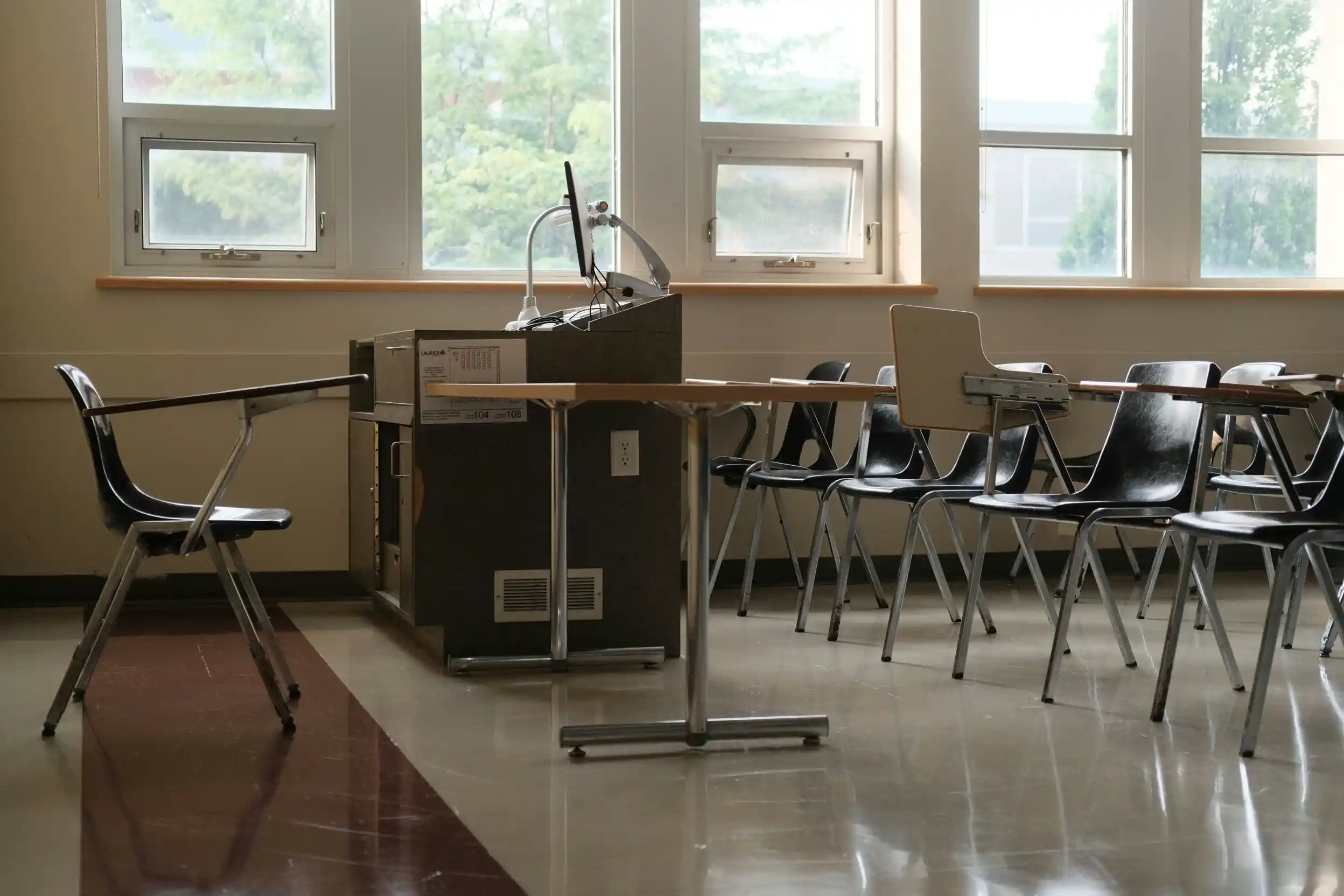For Education Leaders
Get proven strategies and expert analysis from the host of the Learning Can't Wait podcast, delivered straight to your inbox.
Virtual Staffing
Fill Teacher Vacancies in Days
- State-certified experts averaging 15+ years experience
- Fully aligned to your curriculum & standards
- Scalable, cost-effective hybrid solutions
Teacher Retention Strategies: 4 Simple Approached

Amid growing teacher vacancies and expanding teacher shortages nationwide, it becomes increasingly important for schools and districts to retain the top talent that they are able to hire. Teacher retention comes with many important advantages to districts, schools, admins, and students, but it is not always easy to achieve when teachers face low salaries, high stress, irreversible burnout, and multiple opportunities in other institutions. Still, there are certain things that you can do to keep your faculty in the long term for the benefit of all those involved in the education process.
If you’re facing teacher vacancies in your district or need help recruiting and retaining great educators, Fullmind can help. Our virtual staffing services connect schools with highly qualified, state-certified K–12 teachers in all subjects—often in as little as two weeks—so you can keep your classrooms thriving and your students learning.
This article presents the top 4 teacher retention strategies for any school and district. We’ve focused on unique ideas that go beyond the basics of raising compensation, decreasing workload and class sizes, and equipping educators with the necessary technology and tools. These strategies can be introduced to your school regardless of the location, size, and budget.
The 4 best, easy-to-implement, cost-effective strategies for teacher retention are:
- Developing clear salary scales and career advancement guides
- Minimizing stress in the work environment
- Providing unique and relevant professional development
- Nominating to awards and opportunities for recognition
To fill current teacher vacancies in your district, check out Fullmind virtual staffing services. We help districts hire qualified, state-certified K-12 teachers in all subjects within 2 weeks.
What Teacher Retention Is
Teacher retention refers to the share of staff teachers that remain within a school in the long term. This is the opposite of teacher turnover, which is defined as the rate at which educators leave an institution for various reasons. High teacher turnover at a school leads to negative outcomes as it deteriorates the quality of education, prevents building long-term relationships between teachers and students, and imposes high ongoing costs for recruiting teachers.
Meanwhile, strong teacher retention is an indicator that your school and district admins are doing their job right. They are not only recruiting the right candidates but also deploying the necessary strategies and methods to keep them for the long haul. High teacher retention is a sign of a healthy school environment where faculty becomes an indispensable and valued segment of the school body, where educators work in synchrony with one another and administrators, where teachers feel motivated to provide quality education to students, and where educators believe to be adequately compensated for the effort they put in on a daily basis.
Why Teacher Retention Is Important
Before we talk about concrete strategies to keep your school faculty in the long term, we should have a look at why teacher retention is important for schools, districts, and the educational system as a whole.
The main reasons successful teacher retention is important:
- Creating a positive school environment: First and foremost, when teachers remain within the same school for a number of years, this helps establish a culture of cooperation and collaboration among colleagues as well as between teachers and students. The outcomes are a positive school climate and improved teamwork.
- Providing students with access to experienced educators: Teacher retention means that students are instructed by experienced professionals that have been trained in the specific requirements of your school and district instead of recent graduates with no practical experience in the field.
- Working with teachers who are familiar with the school culture and standards: Having educators who understand the school and district requirements ensures smooth teaching processes in addition to easier administrative procedures. This brings a sense of comfort for both faculty and admins.
- Boosting academic results at your school: As students are taught by experienced educators, they are able to achieve better results in ongoing evaluations and on standardized exams.
- Showing appreciation: If you are able to retain teachers, this is a clear indication of the appreciation and respect you have for your faculty body, which makes it easier to recruit top talent in the future. After all, no one wants to join a team flawed by high turnovers, especially when there are so many vacant positions to choose from.
- Saving on recruitment costs: Working with the same teachers year after year eliminates the need to continuously hire new teachers, except in case of retirement or relocation. This means you can keep your recruiting team lean and that you don’t need to work with teacher recruiting firms, making savings that you can allocate towards further developing your teacher retention strategies or anything else that your school needs.
- Reducing the need for onboarding: Not having a continuous stream of new hires also means that you need to spend less time and money on onboarding and training. You can dedicate financial and human resources to other equally important areas.
- Minimizing unexpected mid-year teacher vacancies: When teachers are not suddenly leaving their jobs half way through the year, this ensures a continuous learning process for students and admins alike.
- Avoiding disruptions to the educational process: Finally, high teacher retention rates allows for uninterrupted instruction and education that brings many advantages to students.
Taking into account all these benefits of retaining teachers, you should put active efforts into implementing the right strategies for teacher retention.
Teacher Retention Strategies
Traditionally recommended teacher retention strategies focus around raising salaries, providing competitive benefits, lowering class sizes, decreasing the workload, working on student behavior and discipline, improving the image of the profession, and building reputation for the job. While all these steps are crucial, they require large budgets and long implementation frameworks before their effects start kicking in.
Instead, we offer you 4 strategies for boosting teacher retention that your school can immediately introduce without the need for prohibitive financial resources so that you can start reaping the results right away.
1. Developing a Clear Salary Scale and Career Advancement Guide to Retain Teachers in the Long Run
While increasing teacher pay rates is not the only way to improve retention, it is definitely a major part of the puzzle. After all, the vast majority of people work to earn money to support themselves and their families, and teachers need to be offered decent remuneration considering the demanding jobs they hold. However, rather than pushing up teacher wages right now, which school and district budgets usually don’t allow for, you can build a transparent system for salary raises and career advancement within your institution.
Such a scale should clearly indicate the factors that determine pay and how exactly they impact the salary that a teacher at your institution can expect. Of course, education and qualifications should be two of the main factors. But you should also offer salary increases associated with years of experience, years within your school/district, and additional training and professional development courses. In other words, teachers who remain within your institution and who put effort into expanding their qualifications and skills to provide better education services to their students should be rewarded.
This simple, yet effective strategy creates direct incentives for educators to stay at your school rather than looking for new opportunities elsewhere as each additional year brings them a salary boost. Even if pay goes up only a little each year, this will accumulate to a sizable increase over time that cannot be matched by switching positions. Just make sure that your scale takes into account the rate of inflation and exceeds it so that absolute wages go up over time for tenured teachers.
Meanwhile, the second component of this method motivates existing teachers to continuously improve their qualifications as this is associated with further increases in their compensation. In addition, it needs to be related to the potential for career advancement within your system. For instance, substitute teachers who attend courses should be able to transition into a full-time teacher position or teacher aides who obtain additional training should have access to teacher positions.
In terms of cost, this strategy does not necessitate an immediate raise in expenditure. However, your school should be able to handle the wage increases over time. Some of the funds can come from saving on recruitment and onboarding expenses. At the same time, the impact can be really tangible with the majority of your teachers choosing to stay as they know that they will make more money in the future.
2. Providing a Comfortable Work Environment to Minimize Stress
Another straightforward teacher retention strategy that you can immediately apply at your school is building a supportive, stress-free, comfort-based environment for educators and admins alike. This is a rather vast approach that can accommodate many different ideas that aim to improve the work environment for teachers who are subjected to excessive stress resulting in frequent burnout.
Some actions that make conditions more comfortable for teachers at different levels include:
- Adding a simple coffee station at the teacher lounge: With a few hundred dollars a month, you can offer teachers cold water, coffee, and tea that they can enjoy before classes or during breaks. A small gesture like this not only makes the experience more convenient (as teachers don’t need to bring their own water and coffee) but also shows care and appreciation.
- Providing a noise-free area for rest between classes: There is no need to explain how tiring and stressful classes and breaks can be for teachers due to the incessant noise from students, leading to frequent headaches and discomfort. You can go a long way by offering noise-free spaces for faculty to unwind during breaks. It can be a simply furnished room in the quietest part of the school; it doesn’t have to be anything excessively sophisticated and expensive to be effective.
- Supplying comfortable, ergonomic chairs for teachers in the classroom and the teacher lounge: Having to spend long hours in front of students in the classroom takes its toll on teachers’ bodies in general and backs in specific. You can provide a more comfortable experience and take some of the tension away by furnishing classrooms and teacher lounges with ergonomic chairs. Once again, this doesn’t require a large budget as there are plenty of affordable comfortable seating options that schools can purchase at discounted rates with bulk orders.
- Encouraging cooperation between teachers: As a school administrator, you should motivate teachers as well as admins to work together and collaborate, within the department as well as across departments and disciplines. For instance, you can encourage educators to cooperate on schedules, class materials, homework assignments, and evaluation tests as this will help save time and effort in addition to contributing to building a more positive environment for all.
- Establishing a formal mentorship and peer support program: It is worth launching an official mentoring program that is open to both new hires and experienced teachers within the school. This can also work at the district level. Many teachers cite the lack of a support system as the main reason to leave the school or the profession altogether, but this can be easily reversed with this simple strategy to boost teacher retention.
The implementation of some of these ideas - such as adding a coffee station - can happen instantly, while others - like starting a mentorship scheme - might require a bit more time. But they are all easily applicable to just about any school, in any district.
This strategy is very cost-effective, without the need for massive budgets that most schools and districts don’t have. Meanwhile, teachers will have better opportunities to relax, to learn from one another, and to avoid burnout. The real improvements in the work environment will push down educators’ desire to quit their job and help you retain teachers year after year.
3. Offering Unique Professional Development Opportunities to Keep Teachers Up to Date and Excited
A third extremely effective, yet simple teacher retention strategy is providing diverse professional development options to full-time teachers. Here we refer to something that goes beyond the state requirement of professional development for license renewals. We include anything and everything that results in improved teacher skills, qualifications, capabilities, and also payment.
As a school admin, you can make sure that your staff has plenty of valuable, useful, practical free teacher professional development opportunities to choose from and that they are provided with the time to participate in it. You should keep teacher workloads reasonable to give them enough time at school to take advantage of formal and informal professional development options instead of having to spare from their own time for this. You can allocate a couple of hours a week for group professional development sessions where teachers have fun together, work with peers, and learn not only from the instructor or the course materials but also from each other.
Some preferred forms of professional development for teachers include:
- Seminars and short lectures: You can hold weekly or monthly talks on hot topics in the education sector or subjects relevant to your district in specific by inviting experts from your district, state, or beyond.
- Webinars and online workshops: There are plenty of webinars organized by reputable companies and organizations that discuss various aspects of education and offer access to best practices in the field.
- Education-based podcasts: Education podcasts create a unique opportunity for a weekly get-together for teachers and admins to learn more about the educator profession and leave with practical solutions to everyday challenges. For instance, the Fullmind’s podcast Learning Can’t Wait inspires teachers to try innovative approaches to long-standing issues inside and outside the classroom, while also providing the opportunity to earn official professional development hours.
- Conferences and other industry events: You can offer deserving teachers study time and financial aid to attend exclusive education conferences and events where they can meet peers from out of state, build communities, exchange ideas, and learn how to better serve your school and their students.
- Online courses: You can encourage teachers to choose from hundreds of affordable and sometimes even free online courses that focus on specific subjects or general skills that can be used to better manage the classroom, engage students, and achieve a satisfactory work-life balance.
- Credit courses: You can incorporate credit-bearing courses into your career advancement system to help teachers continue developing their skills, building their career within your institution, and earning more money based on merits.
In your teacher retention efforts, don’t limit professional development to the formal state license renewal requirements. Extend the variety of opportunities you provide to your teachers to meet their specific needs and interests and to equip them with practical skills to show your care about them and to encourage them to stay at the school in the long term.
The cost can vary widely, especially when it comes to credit courses and conference attendance. However, with so many quality education-focused podcasts and webinars, you can start immediately with some free, easy options and build on the strategy over time.
4. Nominating Teachers for National and Regional Awards to Show Appreciation
Another strategy to retain teachers for the long haul by demonstrating appreciation and respect for the efforts they put inside and outside the classroom is nominating them for relevant top teacher awards. There are over 80 national, regional, state, and local annual educator awards, prizes, and fellowships that recognize the work that teachers do and reward the best of the best. Some of these awards are highly prestigious and come with nationwide recognition as well as sizable monetary rewards.
Most teacher awards require nominations by peers or the school where they work. You can easily nominate your most deserving faculty members for appropriate prizes within their subject or area of specialization.
Even if they don’t win the award, they will still get an honorary mention and might get a chance to attend the award ceremony. At the very least, they will clearly understand the value that you place on them and enjoy the appreciation that you have for them.
Among all teacher retention strategies outlined above, this is the easiest to implement. All you have to do is to do an online search for available awards, read through the nomination requirements, and nominate your staff. In most cases, there is no cost associated with this except potentially a small stipend to assist the teacher’s attendance at the ceremony. Meanwhile, the impact can be huge as showing teachers your belief that they deserve a prestigious award is the ultimate proof of your appreciation and trust. This will make them want to remain at your school.
How Successful Teacher Retention Impacts Students
In addition to benefiting schools and admins, teacher retention has a direct positive impact on students.
The main ways in which retaining teachers helps students include:
- High-quality education: The experience that teachers gain over the years makes them better educators who are able to provide higher-quality instruction and support to students in the classroom.
- Curriculum continuity: When students don’t start with new teachers every semester or every year, this ensures continuation in the learning process. Teachers know exactly where they stopped at the end of last year to pick up right there at the beginning of the new academic year. Moreover, students are already accustomed to their teaching style and evaluation methods.
- Higher academic attainments: Through access to experienced teachers and an undisrupted education process, students are able to achieve better results at evaluations and standardized tests.
- Long-term relationships: Students and teachers can build productive, supportive relationships when they work together over the course of a few years. This creates a positive culture across the school.
- Better emotional support: After establishing long-term relations with teachers, students know that they can rely on them both inside and outside the classroom. This gives students confidence that their emotional needs are also met in addition to their academic needs.
- Improved higher-education and career preparation: As a result of everything above, students get better equipped and prepared for the requirements of college or a career. They leave school with positive experiences and readiness to face the next stage in their life.
As the ultimate goal of the educational system is to teach children essential knowledge and skills and to prepare them for the future, all these advantages should inspire you to implement some of the suggested teacher retention strategies to start seeing the positive effects right away.
Bottom Line on Teacher Retention
These 4 strategies for teacher retention are something that you can start implementing at your school as soon as today. Unlike other methods, they don’t require major financial resources or long implementation timelines. You can launch a salary scale and career advancement plan, build a positive work environment, provide professional development, and nominate faculty for awards right away to start reaping the positive outcomes. Teacher retention will reduce vacancies, minimize recruitment efforts, and boost student performance at your school.
Meanwhile, if you’re struggling with filling teacher vacancies, check out Fullmind virtual staffing services. We help districts find highly qualified, state-licensed K-12 teachers in as little as 2 weeks. Get in touch to discuss your needs.
For Education Leaders
Get proven strategies and expert analysis from the host of the Learning Can't Wait podcast, delivered straight to your inbox.
Let’s Work Together
We’ll review your application and get in touch!




.webp)













.webp)



























.webp)



%20.webp)




































.webp)




.webp)


.webp)


.webp)
